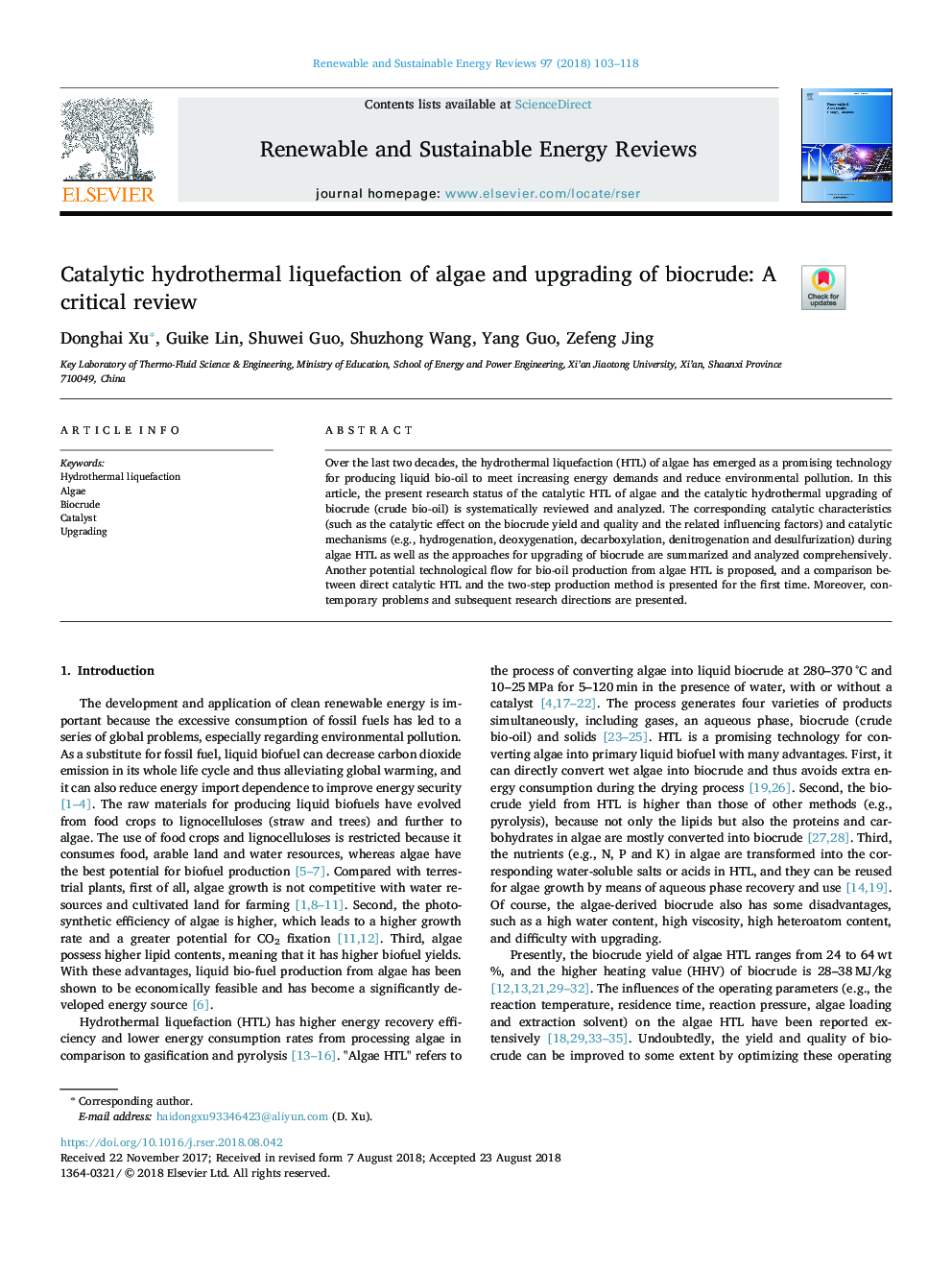| Article ID | Journal | Published Year | Pages | File Type |
|---|---|---|---|---|
| 10136443 | Renewable and Sustainable Energy Reviews | 2018 | 16 Pages |
Abstract
Over the last two decades, the hydrothermal liquefaction (HTL) of algae has emerged as a promising technology for producing liquid bio-oil to meet increasing energy demands and reduce environmental pollution. In this article, the present research status of the catalytic HTL of algae and the catalytic hydrothermal upgrading of biocrude (crude bio-oil) is systematically reviewed and analyzed. The corresponding catalytic characteristics (such as the catalytic effect on the biocrude yield and quality and the related influencing factors) and catalytic mechanisms (e.g., hydrogenation, deoxygenation, decarboxylation, denitrogenation and desulfurization) during algae HTL as well as the approaches for upgrading of biocrude are summarized and analyzed comprehensively. Another potential technological flow for bio-oil production from algae HTL is proposed, and a comparison between direct catalytic HTL and the two-step production method is presented for the first time. Moreover, contemporary problems and subsequent research directions are presented.
Related Topics
Physical Sciences and Engineering
Energy
Renewable Energy, Sustainability and the Environment
Authors
Donghai Xu, Guike Lin, Shuwei Guo, Shuzhong Wang, Yang Guo, Zefeng Jing,
